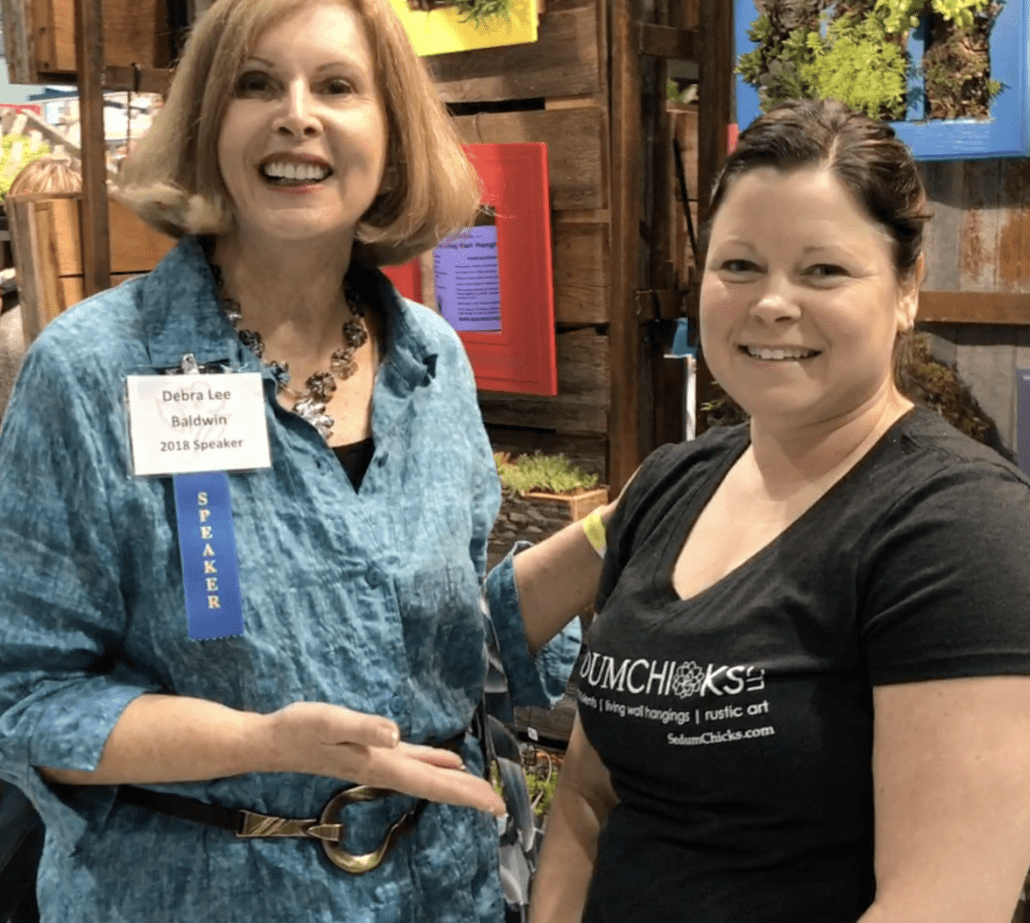
From my YouTube video: Sedum Chicks at the Northwest Flower & Garden Show
Becky Sell of Sedum Chicks plants cold-hardy succulents in repurposed wood-and-metal containers, hypertufa pots, wreaths and more. She grows the plants, too, in Turner, Oregon, near the Washington border.
Becky’s compositions can overwinter outdoors in northerly climates (Zones 4 to 8), providing the potting medium drains well. Cold-hardy succulents such as stonecrops and hens-and-chicks will also grow in Zones 8 and 9 if protected from heat in excess of 85 degrees and scorching sun. Some varieties, notably shrub sedums, die to the ground in any locale and come back the following spring.
In her designs, Becky often combines sedums (stonecrops), sempervivums (hens-and-chicks), and Delosperma ice plants. Of a little-known Rosularia species with soft, light green leaves, she says, “When people ask which plant is my favorite, this is definitely on the list.”
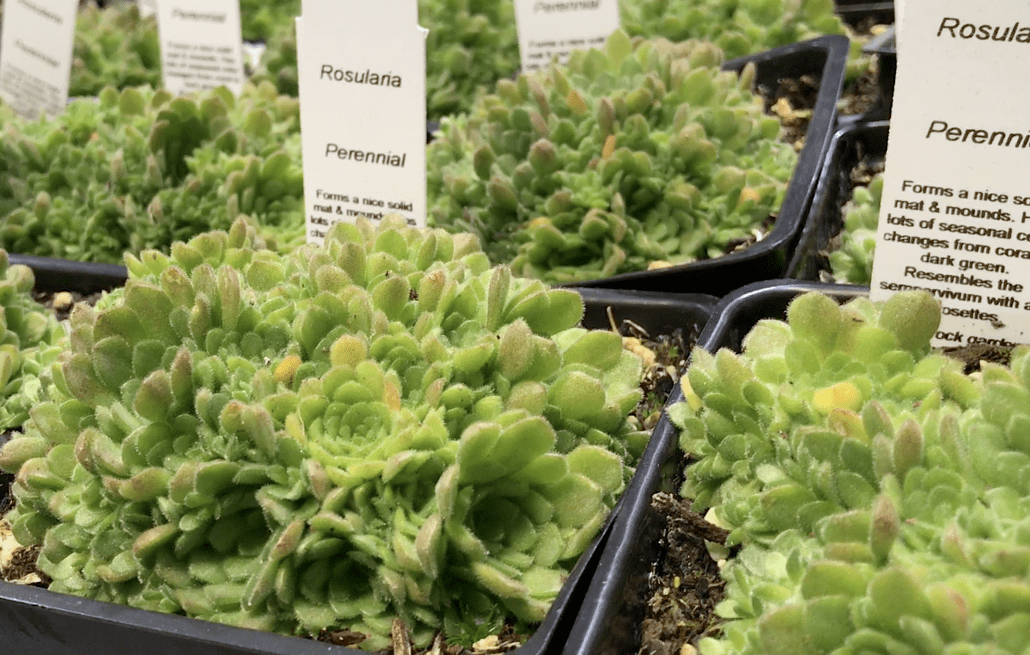
There are about 35 species in the genus Rosularia. The sempervivum-like succulents come from Europe, the Himalayas, and northern Africa.
Find more photos of succulents for Northern climates—including many of Becky’s favorites—on my website’s new Cold-Hardy Succulents page. I photographed the designs shown here during the Northwest Flower & Garden Show at the Sedum Chicks booth, which won an award for outstanding visual appeal.
Below: This bright red vertical container was a hit. At right, I darkened the photo to make plant IDs, in white letters, stand out.
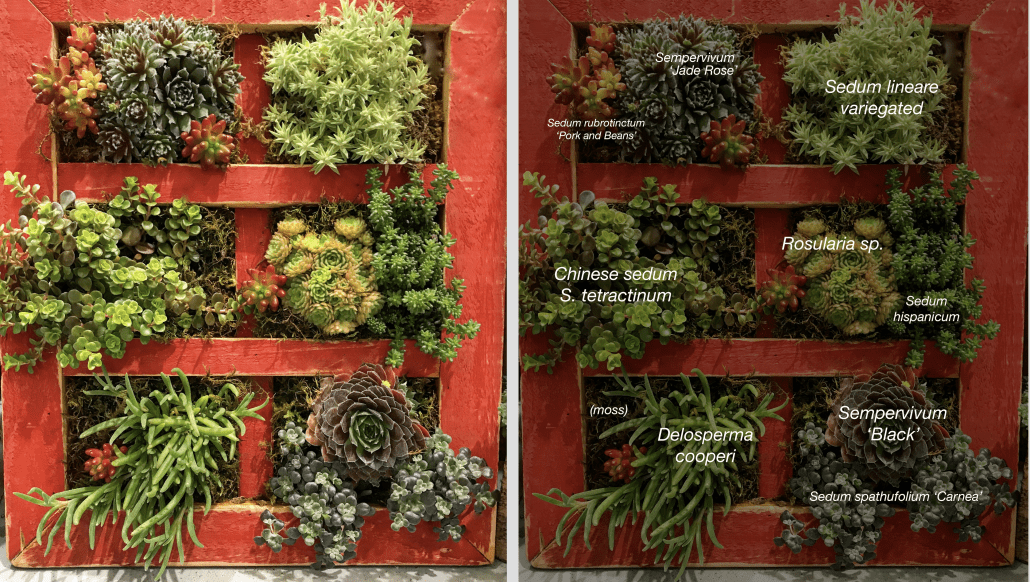
Below: Sempervivum ‘Jade Rose’ repeats the teal blue of a Sedum spathulifolium cultivar.

Below: In a cold-hardy wreath, Becky surrounded a large sempervivum rosette with smaller sedums, Delosperma cooperi (at lower left), and Sedum confusum (lower right).
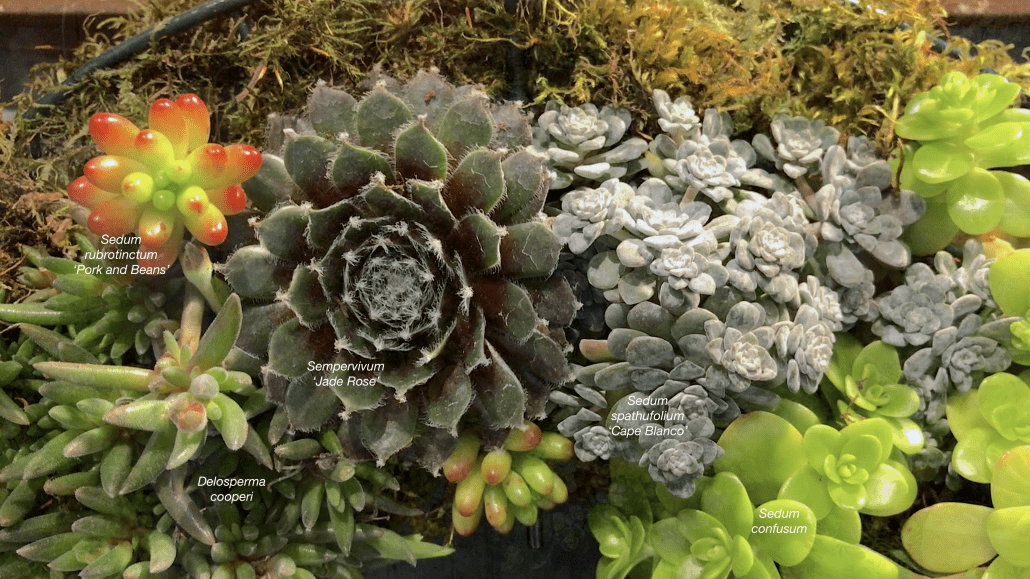
Below: I’ve ID’d the three sedums in this wreath at right. Becky gives her plants “hair cuts” to keep them compact.
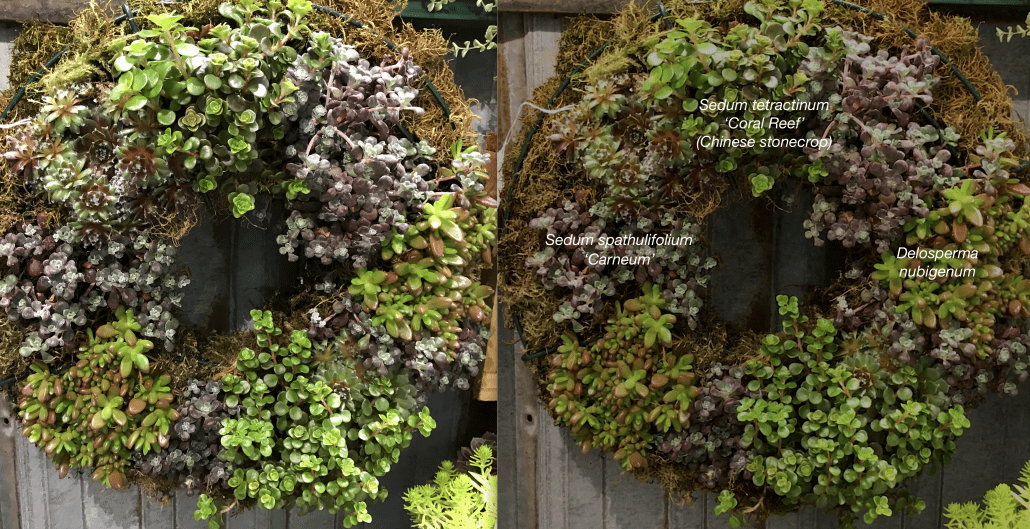
“I like its dark edges,” Becky says of Sempervivum ‘Black’, shown below in dramatic contrast with chartreuse Sedum ‘Lemon Coral’. At lower right is a succulent native to Oregon: Sedum oreganum.
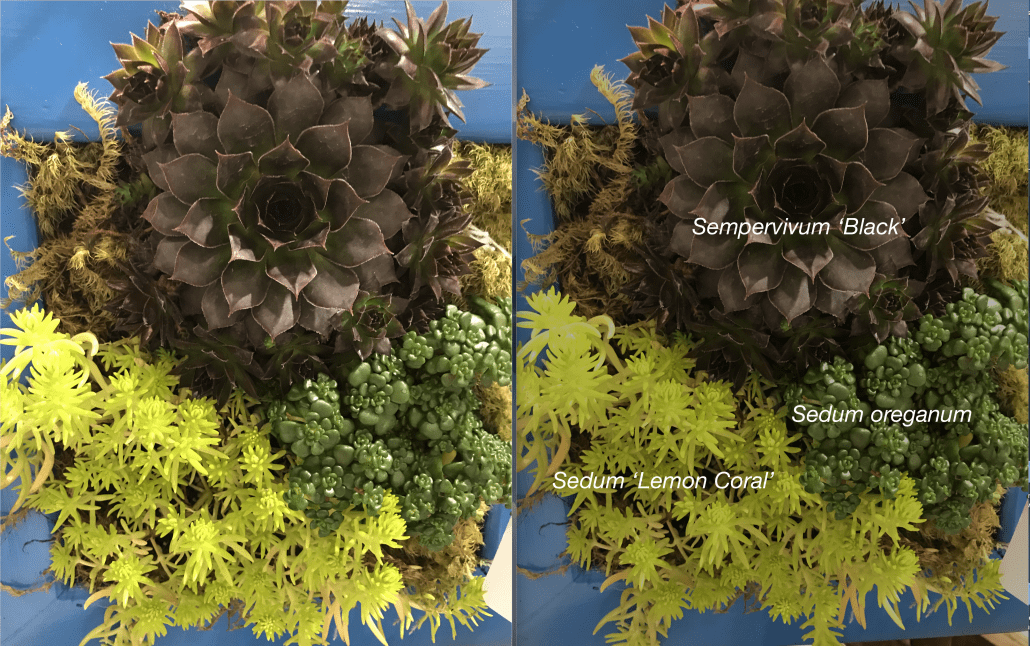
Becky and husband Paul create planters from repurposed wood and metal. The bronzy succulents below are Sedum confusum, which blushes red-orange in a sunny location. When less confused, it’s bright apple green.
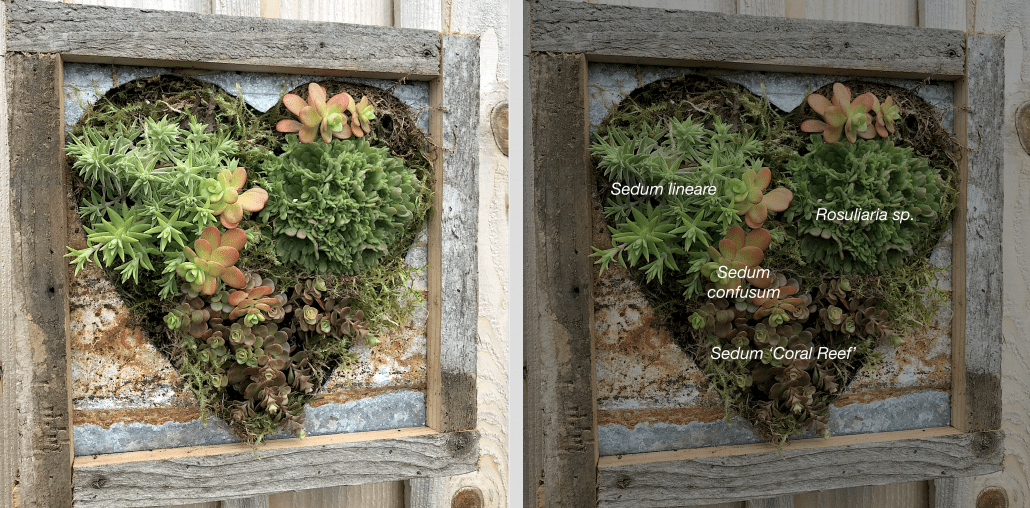
For wreaths and vertical gardens, Becky uses sphagnum moss to help hold plants in place. She emphasizes the importance of good drainage, which is true for all succulents, but especially those in rainy climates. Succulents from cold climates tend to have thin or small leaves and tend to prefer a richer potting soil than thicker-leaved varieties from desert regions. She recommends Black Gold’s organic mix.
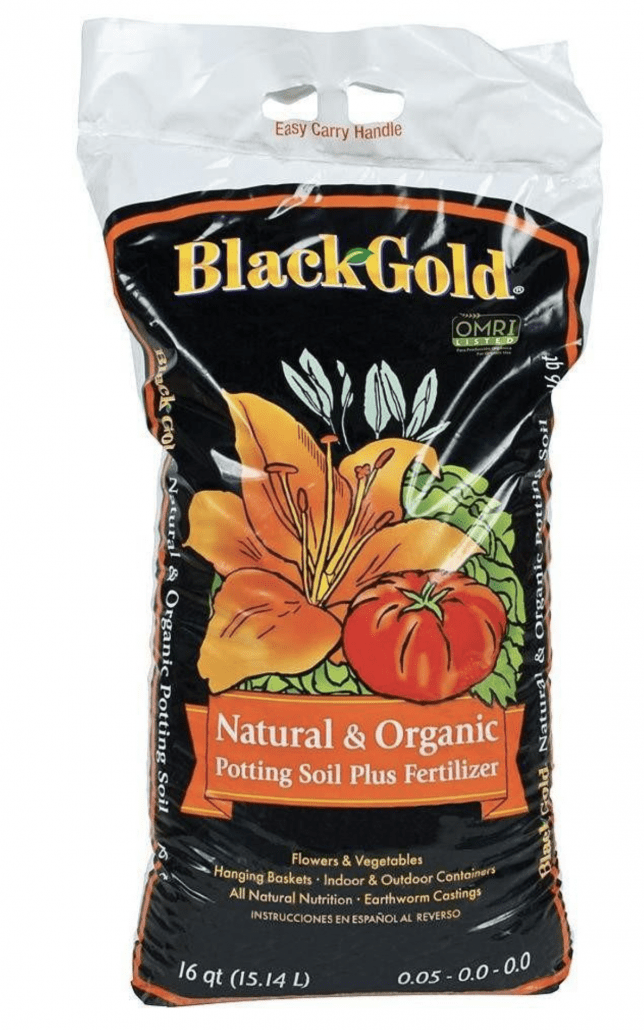
In my YouTube video, Sedum Chicks at the Northwest Flower & Garden Show, Becky explains how to select, cultivate and beautifully combine cold-hardy succulents.

Learn more about succulents for northerly climates:
On my website:
— Find tips on care and cultivation, plus resources at How to Grow Succulents in Northerly Climates
— See labeled varieties of popular, readily available varieties on my Cold Hardy Succulents page.
On my YouTube channel:
— Growing Succulents in Northerly Climates: Part One of my presentation at the Northwest Flower & Garden Show. See gorgeous new Sempervivum cultivars and inspiring, eye-catching design ideas.
— Growing Succulents in Northerly Climates, Part Two of my presentation at the Northwest Flower & Garden Show. More cool succulents for cold climates and how you can grow frost-tender succulents indoors.
— Sedum Chicks at the Northwest Flower & Garden Show. Pacific NW designer/grower Becky Sell explains how to select, care for and beautifully combine cold-hardy sedums, semps and other succulents.
In my books:
— See the Cold-Climate Succulent Gardens section of Designing with Succulents (2nd ed.).
— Find info in all my books about succulents in the genera Sedum, Sempervivum, Delosperma and more.
The post Designing with Cold-Hardy Succulents appeared first on Succulents and Succulent Garden Design | Debra Lee Baldwin.
from Succulents and Succulent Garden Design | Debra Lee Baldwin http://ift.tt/2GszrNG
via IFTTT

No hay comentarios:
Publicar un comentario